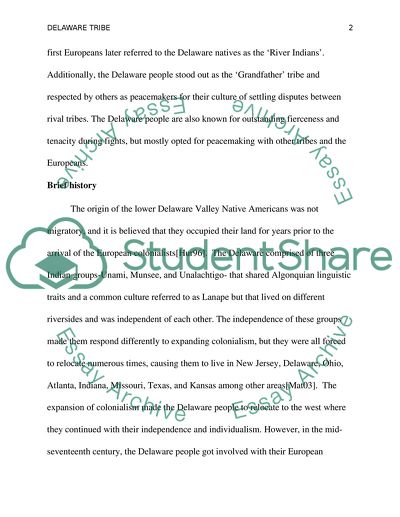Cite this document
(The Delaware Tribe of Indians Research Paper Example | Topics and Well Written Essays - 2500 words, n.d.)
The Delaware Tribe of Indians Research Paper Example | Topics and Well Written Essays - 2500 words. Retrieved from https://studentshare.org/anthropology/1852381-final-research-project
The Delaware Tribe of Indians Research Paper Example | Topics and Well Written Essays - 2500 words. Retrieved from https://studentshare.org/anthropology/1852381-final-research-project
(The Delaware Tribe of Indians Research Paper Example | Topics and Well Written Essays - 2500 Words)
The Delaware Tribe of Indians Research Paper Example | Topics and Well Written Essays - 2500 Words. https://studentshare.org/anthropology/1852381-final-research-project.
The Delaware Tribe of Indians Research Paper Example | Topics and Well Written Essays - 2500 Words. https://studentshare.org/anthropology/1852381-final-research-project.
“The Delaware Tribe of Indians Research Paper Example | Topics and Well Written Essays - 2500 Words”, n.d. https://studentshare.org/anthropology/1852381-final-research-project.


